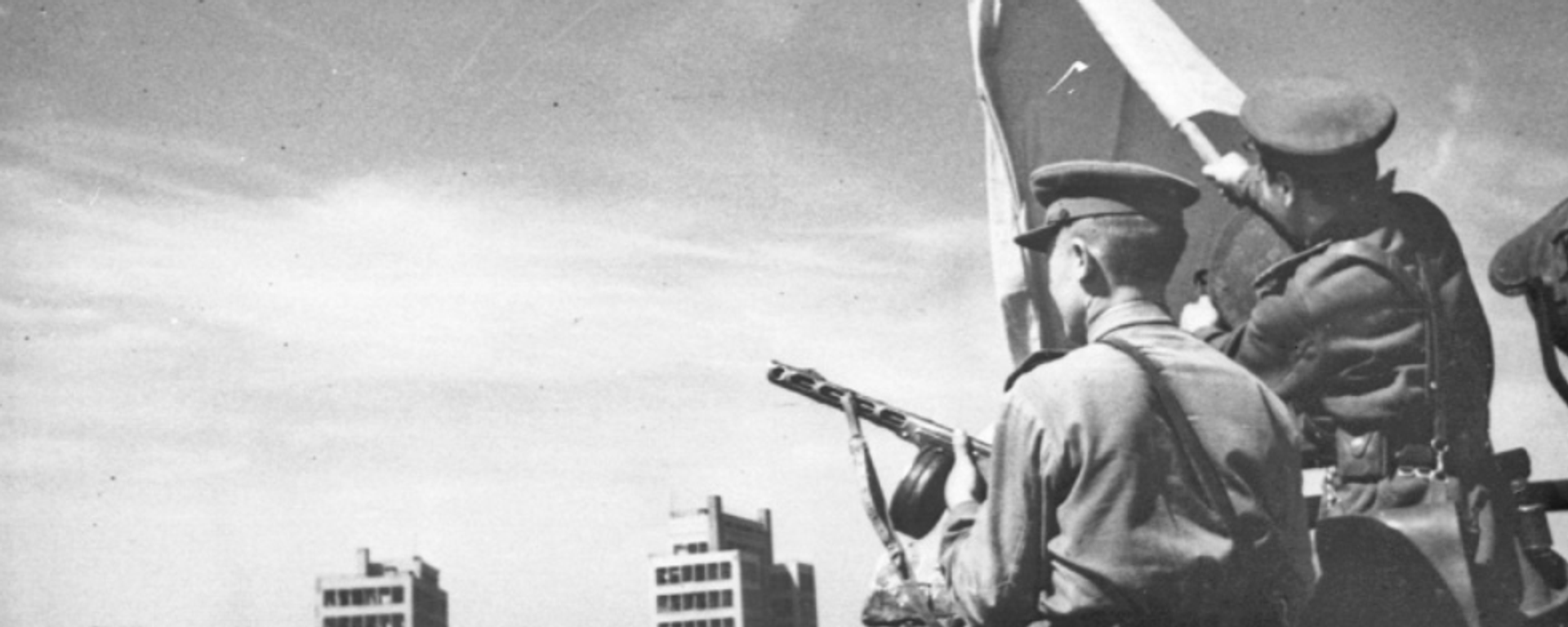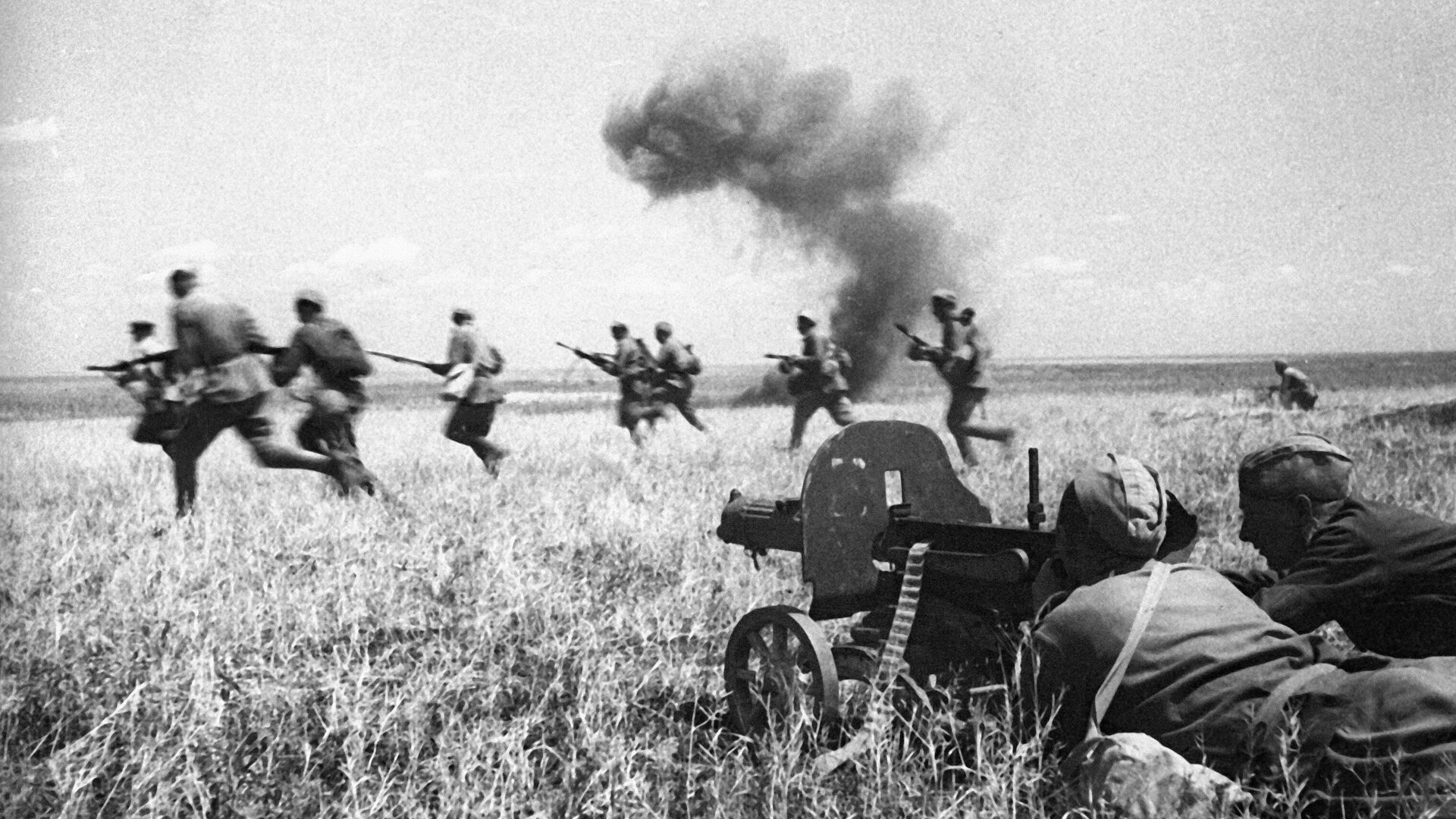https://sputnikglobe.com/20231023/how-melitopols-crucial-little-stalingrad-offensive-enabled-crimea--odessas-liberation-1114422166.html
How Melitopol's Crucial 'Little Stalingrad' Offensive Enabled Crimea & Odessa's Liberation
How Melitopol's Crucial 'Little Stalingrad' Offensive Enabled Crimea & Odessa's Liberation
Sputnik International
The Melitopol offensive has been likened to the Red Army's "Little Stalingrad." Recapturing the city from the Nazis essentially provided the key to liberating Ukraine's right bank and Crimea
2023-10-23T12:53+0000
2023-10-23T12:53+0000
2023-10-23T12:53+0000
world
mikhail myagkov
melitopol
crimea
odessa
red army
nazis
wwii
https://cdn1.img.sputnikglobe.com/img/07e7/0a/17/1114426826_0:170:3038:1879_1920x0_80_0_0_795de7b201daf220d5d5b1ccc4ee966c.jpg
Exactly 80 years ago, on October 23, 1943, the Red Army freed Melitopol, which had been under Nazis' brutal grip since October 1941. The city endured two years of harsh occupation, marked by curfews, executions of civilians and forced labor of its youth in Germany.During the occupation, 12,000 people were kidnapped and 14,000 civilians were executed in Melitopol, which had a population of about 75,000 at the time.According to the historian, a notable aspect of the Melitopol battle was the active involvement of a group known as the "pantsirniki." These fighters belonged to the 12th Engineer-Sapper Brigade and wore steel breastplates, which served as early prototypes for modern body armor. The presence of these steel shields played a crucial role in mitigating the otherwise inevitable casualties. The pantsirniki units were responsible for placing mines beneath buildings where German troops had sought refuge, enduring constant shelling in the process. Additionally, the narrow streets of the city posed a challenge as the Germans utilized armored vehicles. Despite the risks involved, the "pantsirniki" directly planted mines beneath enemy tanks.Key to Odessa and CrimeaWhen discussing the reasons for the fierce resistance by the Nazis and their Romanian allies in the city, Myagkov highlighted that Melitopol was essentially crucial in breaking through to the lower Dnieper and would mark the beginning of the liberation of the southern sector of Ukraine's right-bank, including vital Black Sea cities such as Kherson, Nikolaev, and Odessa.Moreover, the liberation of Melitopol effectively put the Red Army on the road to the Isthmus of Perekop.Some 210,000 German soldiers, most of whom were Nazi reserves released after the Wehrmacht’s defeat in the Battle of Donbass, defended the Wotan line along the Molochnaya River. "The enemy realized that losing this city was not an option, so they fought to the death," Myagkov emphasized.At first, the unprecedented Nazi effort seemed to be successful. The Red Army's first assault on Melitopol (September 26-30, 1943) was thwarted by a powerful system of fortifications, resulting in significant losses and forcing a regrouping.Artillery - the ‘God of War’However, the early setbacks were promptly compensated by effective intelligence work and artillery, which, as many experts still note today, remains the "God of War," just as it was 80 years ago when commenting on the course of the special military operation in Ukraine."Our artillery performed exceptionally well during that time, functioning flawlessly like clockwork. We initiated the operation with artillery preparation, effectively demolishing enemy firing positions. The relentless artillery barrage persisted, penetrating deep into the German defenses. Without pausing, our infantry swiftly entered the battle and launched a ferocious assault on Nazi positions." Myagkov elaborated.Planned Awards for 'Triumphs' That Never Would BeOne interesting detail about the Melitopol Offensive is that according to certain information, the Germans produced medals in anticipation of successfully defending the city, with the intention of awarding them to Wehrmacht soldiers. However, history took a different course, as on October 23, the Red Army liberated Melitopol from Nazi occupation.The significance of this operation becomes evident when we consider the number of soldiers bestowed with the title of Hero of the Soviet Union, which amounts to 87 individuals, with 12 of them hailing from Melitopol.
https://sputnikglobe.com/20230703/azov-militants-blackmail-museum-in-bid-to-distort-ussrs-role-in-wwii-1111638980.html
https://sputnikglobe.com/20230823/battle-of-kursk-the-soviet-victory-that-shaped-wwiis-outcome-1112810111.html
melitopol
crimea
odessa
Sputnik International
feedback@sputniknews.com
+74956456601
MIA „Rosiya Segodnya“
2023
Sputnik International
feedback@sputniknews.com
+74956456601
MIA „Rosiya Segodnya“
News
en_EN
Sputnik International
feedback@sputniknews.com
+74956456601
MIA „Rosiya Segodnya“
Sputnik International
feedback@sputniknews.com
+74956456601
MIA „Rosiya Segodnya“
melitopol offensive, little stalingrad
melitopol offensive, little stalingrad
How Melitopol's Crucial 'Little Stalingrad' Offensive Enabled Crimea & Odessa's Liberation
The Melitopol offensive has been likened to the Red Army's "Little Stalingrad." Recapturing the city from the Nazis required intense urban combat, and the victory essentially provided the key to liberating Ukraine's right bank and Crimea, Mikhail Myagkov, the scientific director of the Russian Military Historical Society, told Sputnik.
Exactly 80 years ago, on October 23, 1943, the Red Army freed Melitopol, which had been under Nazis' brutal grip since October 1941. The city endured two years of harsh occupation, marked by curfews, executions of civilians and forced labor of its youth in Germany.
During the occupation, 12,000 people were kidnapped and 14,000 civilians were executed in Melitopol, which had a population of about 75,000 at the time.
"It was not by chance that our commanders called the Melitopol offensive 'Little Stalingrad'. For ten days, fierce battles raged in the streets of the devastated city. It was extremely challenging, but the Red Army managed it, thanks in large part to the assault units whose experience was gained in the Battle of Stalingrad," Myagkov said.
According to the historian, a notable aspect of the Melitopol battle was the active involvement of a group known as the "pantsirniki." These fighters belonged to the 12th Engineer-Sapper Brigade and wore steel breastplates, which served as early prototypes for modern body armor.
The presence of these steel shields played a crucial role in mitigating the otherwise inevitable casualties. The pantsirniki units were responsible for placing mines beneath buildings where German troops had sought refuge, enduring constant shelling in the process. Additionally, the narrow streets of the city posed a challenge as the Germans utilized armored vehicles. Despite the risks involved, the "pantsirniki" directly planted mines beneath enemy tanks.
When discussing the reasons for the fierce resistance by the Nazis and their Romanian allies in the city, Myagkov highlighted that Melitopol was essentially crucial in breaking through to the lower Dnieper and would mark the beginning of the liberation of the southern sector of Ukraine's right-bank, including vital Black Sea cities such as Kherson, Nikolaev, and Odessa.
Moreover, the liberation of Melitopol effectively put the Red Army on the road to the Isthmus of Perekop.
"The loss of Melitopol would have meant that the entire German 17th Army and Romanian units would have ended up in Crimea's western sector. The enemy understood the gravity of the situation and turned the city into one of the most heavily fortified points of the 'Wotan' defense line, named in honor of the ancient Germanic pagan god (known as Odin to the Scandinavian peoples). Wehrmacht soldiers stationed there received triple pay," the historian explained.
Some 210,000 German soldiers, most of whom were Nazi reserves released after the Wehrmacht’s defeat in the Battle of Donbass, defended the Wotan line along the Molochnaya River. "The enemy realized that losing this city was not an option, so they fought to the death," Myagkov emphasized.

23 August 2023, 16:16 GMT
At first, the unprecedented Nazi effort seemed to be successful. The Red Army's first assault on Melitopol (September 26-30, 1943) was thwarted by a powerful system of fortifications, resulting in significant losses and forcing a regrouping.
Artillery - the ‘God of War’
However, the early setbacks were promptly compensated by effective intelligence work and artillery, which, as many experts still note today, remains the "God of War," just as it was 80 years ago when commenting on the course of the special military operation in Ukraine.
"Our artillery performed exceptionally well during that time, functioning flawlessly like clockwork. We initiated the operation with artillery preparation, effectively demolishing enemy firing positions. The relentless artillery barrage persisted, penetrating deep into the German defenses. Without pausing, our infantry swiftly entered the battle and launched a ferocious assault on Nazi positions." Myagkov elaborated.
Planned Awards for 'Triumphs' That Never Would Be
One interesting detail about the Melitopol Offensive is that according to certain information, the Germans produced medals in anticipation of successfully defending the city, with the intention of awarding them to Wehrmacht soldiers. However, history took a different course, as on October 23, the Red Army liberated Melitopol from Nazi occupation.
The significance of this operation becomes evident when we consider the number of soldiers bestowed with the title of Hero of the Soviet Union, which amounts to 87 individuals, with 12 of them hailing from Melitopol.






